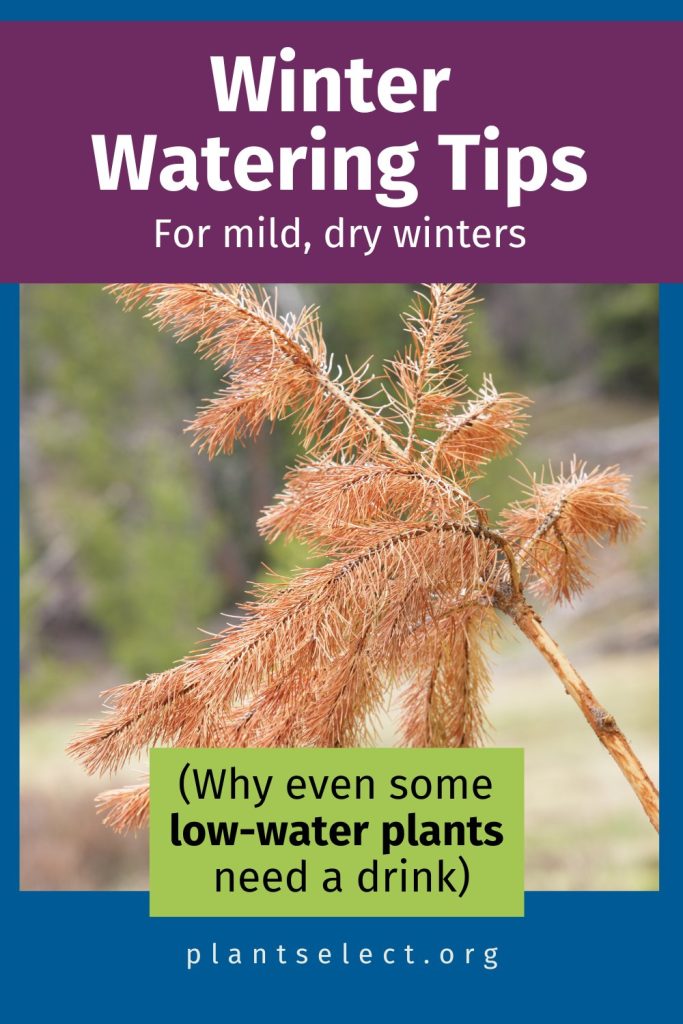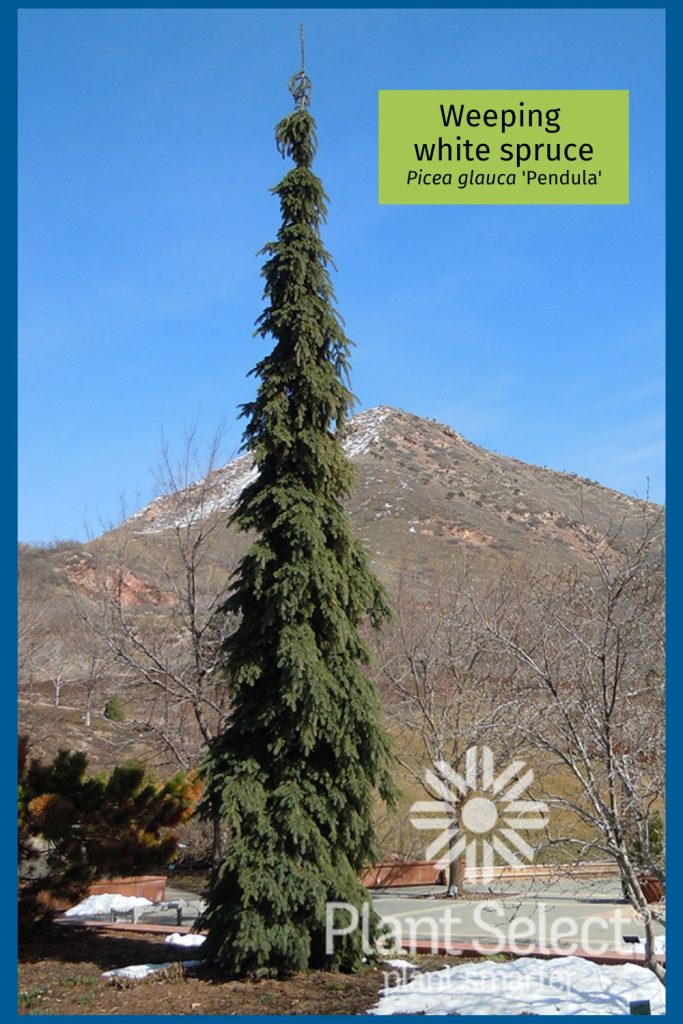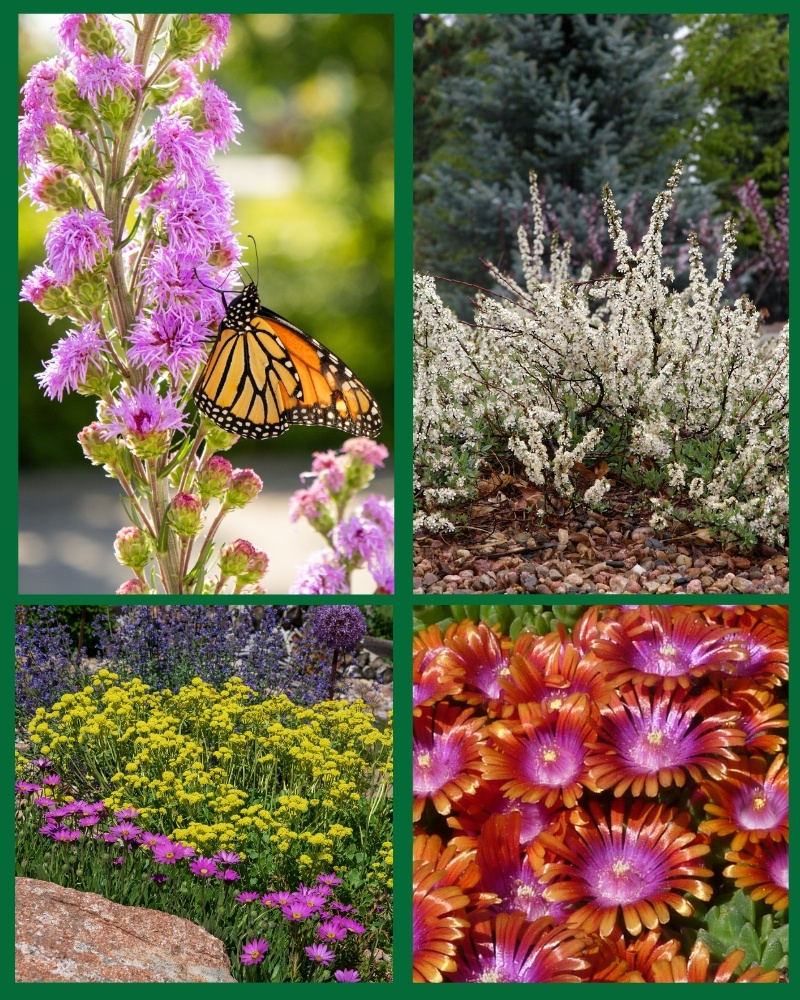Winter Watering Trees, Shrubs and Perennials During Mild, Dry Winters
Even some low-water plants may need a drink!

Over the last few months, we’ve had mild temperatures and low moisture in parts of Colorado, Wyoming, Utah and the West. These conditions can be tough on plants—even some low-water plants.
Warm, daytime temperatures with cold nights and big, daily temperature swings have kept plants right on the edge of dormancy. (On the Colorado State University campus, we noticed perennials blooming well into December!) This is concerning because dormancy is important for cold-tolerant plants. It helps them store nutrients, prevent water loss and avoid damage from the cold.
Not to mention… extended dry periods in the fall and winter can damage plant root systems, which can affect next season’s growth. Some plants may not emerge in the spring. Or, they may emerge looking fine (exhausting their stored energy sources to do so), but when temperatures heat up, they weaken, die, or surrender to insects and disease. For trees, it often can take a few years for the damage to appear.
What about the occasional inch or two of snow, you may wonder? Does that help?
Typically, light, infrequent snows don’t offer much moisture to plants. The moisture is often just a fraction of an inch in actual irrigation, and some of it can get lost through evaporation.
Which plants need winter watering?
If you’re experiencing a mild and dry winter, certain types of trees, shrubs and perennials may benefit from supplemental watering, including:
- Evergreen trees/shrubs and conifers, such as weeping white spruce. These plants don’t go dormant over winter. They’re still using and releasing water as part of photosynthesis.

- Newly planted trees that are still getting established. This could include trees you planted more than a year ago. Generally, trees take one year to establish for each inch of trunk diameter. This means if you plant a tree that has a three-inch diameter trunk, it typically takes at least three years for that tree to get established.
- Shrubs you planted in the last year.
- Perennials you planted in the fall or you bare root planted in the last year.
- Plants in windy and/or south- and west-facing exposures. They’re more prone to damage and drying out.
- Plants getting reflected heat from walls, buildings or fences.They’re also more prone to damage and drying out.
Winter watering tips for trees, shrubs and perennials
Here are tips to help you water your more vulnerable plants during mild, dry winters. These tips are based on best practices from the Colorado State University Extension, Cheyenne Botanic Gardens and Denver Botanic Gardens:
- Water once (or twice) a month during extended dry periods with no snow cover.
- Water on days above 40 degrees—ideally, when there’s no snow cover and the ground isn’t frozen.
- Water mid-day, so water has time to soak into the ground.
- Trees: Water trees around their dripline (the ground area below the outer edge of their branches). Include the ground area near the base of the tree for newly planted trees. As a general guideline during dry winters, give your trees 10 gallons of water per inch of trunk diameter per month. For example, a three-inch diameter tree would get 30 gallons of water.
- Shrubs: Water shrubs around their dripline and base. The amount you water a shrub can vary. It depends on how established the shrub is, how big it is, and where it’s located in your landscape. As a general guideline during dry winters, give newly planted shrubs 5 gallons of water twice/month. Provide small, established shrubs with 5 gallons of water once/month. Provide big, established shrubs with about 18 gallons of water once/month. (To help you quantify 5 gallons, you may want to time how long it takes you to fill a 5-gallon bucket with your hose.)
- Disconnect and drain your hose when you’re finished.
What plants typically don’t need winter watering?
Established xeric plants typically don’t need consistent irrigation during dry winters. They’re used to going through long periods without water and not experiencing negative, long-term effects. They’ve adapted to survive in dry conditions with very little water.
For more information
If you’d like to dig deeper into winter watering, please check out these resources:
- Fall and winter watering fact sheet from Colorado State University Extension
- Winter landscape maintenance from Cheyenne Botanic Gardens
- Winter watering article from Denver Botanic Gardens
We hope the universities will do more research on this topic, particularly as our western weather grows more erratic!



